★★
“The main powder here is soap, not cocaine.”
 Business is on the streets, check it out.
Business is on the streets, check it out.
Survival of the strongest they’re the ones in charge
It’s at gunpoint, it’s outside the law.
Your word is your bond and you know it, man.
How many lives have been lost to loyalty?
If you’re my partner take care you can’t fail me
Honor comes before love.
The streets are fierce because they know I’m here.
We’re the masters of this dream, All American dream
I’m brave not merciful, I’m bad to the bone
By steel, tequila and blood we’ll be the masters of paradise
Based on the above theme song, and credits which are a fast-paced montage of gun-fights, explosions and chases through the Everglades, you’d be expecting a action-packed creature that will keep the adrenaline pumping. The reality? Not so much. Indeed, just about every gun-battle in the 71 episodes here could be fitted into the opening credits. Despite this being the much-touted return of del Castillo to the genre, after her success in La Reina Del Sur, she is just one in a slew of characters, and while central, is arguably not the focus.
The title of this 2015 show translates as “Masters of Paradise”, and it occupies a not dissimilar time and place to the previous year’s Viuda Negra: Miami during the infamous cocaine wars of the late seventies and early eighties. Rather than taking some inspiration from the actual character of Griselda Blanco, this Mexican-Chilean co-production invents an entire set of fictional characters. At the core is Anastasia Cardona (del Castillo), the wife of a Mexican drug lord who is forced to flee the country after war breaks out with a rival group of traffickers.
They try to set up shop in Florida instead, which brings them to the attention some of well-established local rivals, the Quezadas, led by Leandro (Varoni). While Anastasia’s husband soon bites a bullet, the twist is, it’s not the enemy who are responsible: Anastasia herself killed him, in a fit of jealousy. Not that this stops Leandro’s chief hitman from taking the credit, or from attacking the funeral, stealing the corpse and then dropping it from a helicopter into the courtyard of his house – to make some kind of point, I guess. They follow up by kidnapping Anastasia, leaving her for dead in the swamps, and when she eventually recovers, vows to take revenge.
If this was what the show was about, it would be fine. However, it’s much more about the everyday lives of her various minions and their families, in particular, Conrado San Miguel (Zabaleta) and Adán Romero (Torre), the latter of whom is just as newly arrived in Miami. These all unfold against a backdrop of Anastasia’s quest for power and revenge, but the latter feels more like an afterthought. Think of it as similar to the way Zombieland was a road movie, that just happened to unfold against a backdrop of the zombie apocalypse. So this is a soap opera, that just happens to unfold against a backdrop of drug dealing and vengeance.
So, we get things like Adán’s daughter having issues with a jealous classmate at her new school. Conrado’s wife, Erica, is an aspiring actress, who is lured in by a sleazy producer into material of a more, ah, “adult” nature. An interfering mother-in-law. Unwanted pregnancy. A sprinkling of sexual tension. It’s mostly generic stuff, blandly uninteresting and little more than background noise as far as drama goes – though I was amused by the first name-check of B-movie director Russ Meyer I’ve heard in a telenovela. Another problem was the Chilean co-production elements, which keeps diverting the film off to that South American country, almost inevitably at the worst possible moment, just when things are getting going in Florida.
All told, probably less than a third of this is what I’d call “the good stuff”. Much of that is down to del Castillo, who is as solid as ever, and has plenty of opportunities to deliver her trademark stare, capable of melting a hole in sheet metal. I also note the presence of Oscar-nominated actress Adriana Barraza as Anastasia’s mother, Irene Medrano, who has an entire graveyard worth of skeletons in her closet; that’s certainly a better pedigree of supporting cast than most series can boast. Other positive elements include the husband and wife “cleaners”, who have a thriving business disposing of all the dead bodies, and occasionally effective moments, such as when one character is given the news of her mother’s death, in medium-long shot, and told almost entirely in her reaction.
However, the scripting in particular seems to be remarkably sloppy. At one point, Leandro Quezada appears to be stricken with a terminal disease, but this plot-line appears to be casually discarded, almost as if it never happened. The time-frame doesn’t make a great deal of sense either: there’s a gap of seven months when Anastasia recovers from her kidnapping, during which Quezada and his clan are doing… apparently nothing, when they have a perfect opportunity to bury their enemies for good. It performs another great leap forward for the final couple of episodes as well, skipping over two years, for no clear purpose. And that ending supposedly offers a big twist, yet is incredibly obvious: while I’m usually no good at spotting these things, even I saw this one coming from a long way off.
It never quite became irritating or annoying enough for me to give serious consideration to giving up, and was, at least, relatively consistent in its tone and style throughout. My disinterest was mostly a result of the content. It feels as though the makers didn’t want to tell a story about crime and criminals, so much as bolt the elements of a traditional soap-opera onto a hot topic, seeking to exploit del Castillo’s previous work and reputation, rather than capitalizing and building on it. Definitely a disappointment.
Creator: Pablo Illanes
Star: Kate del Castillo, Miguel Varoni, Jorge Zabaleta, José María Torre





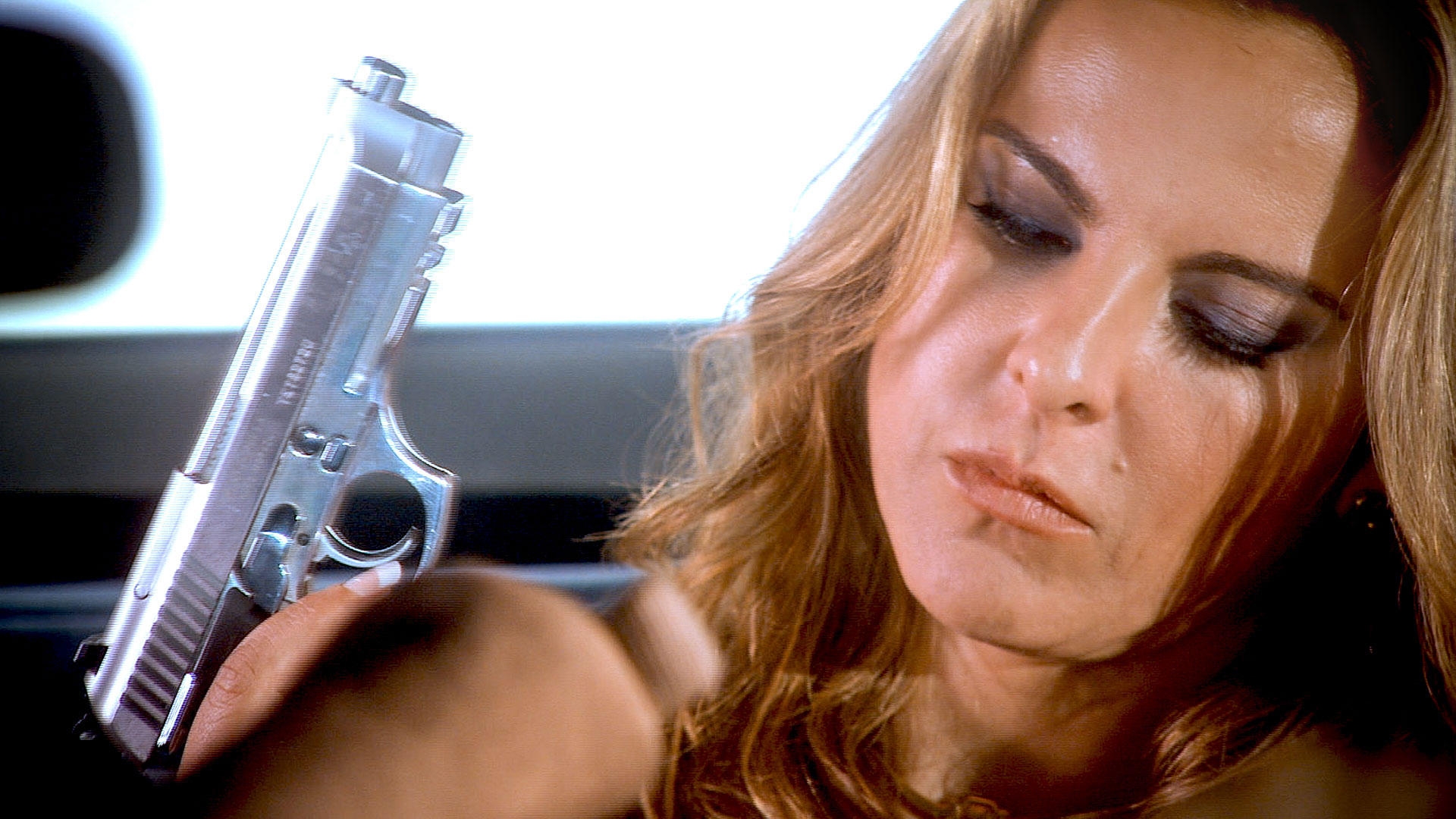










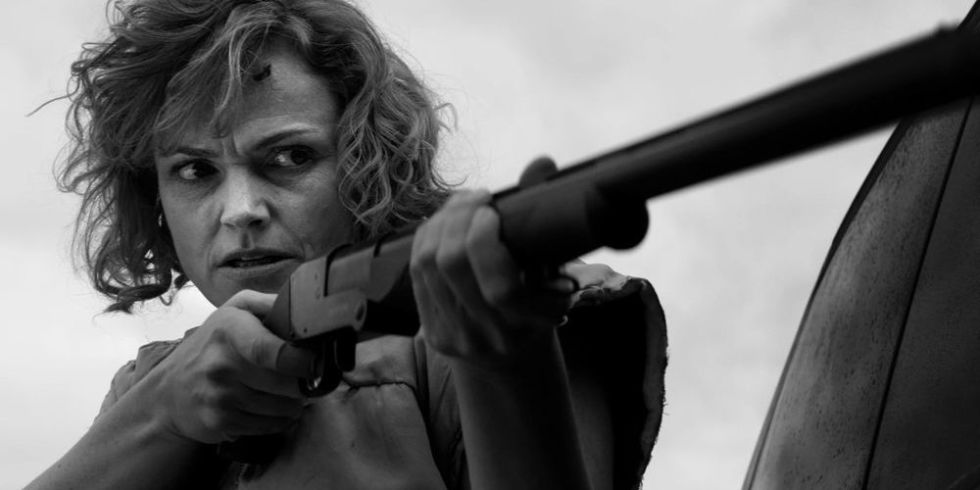 ★★★½
★★★½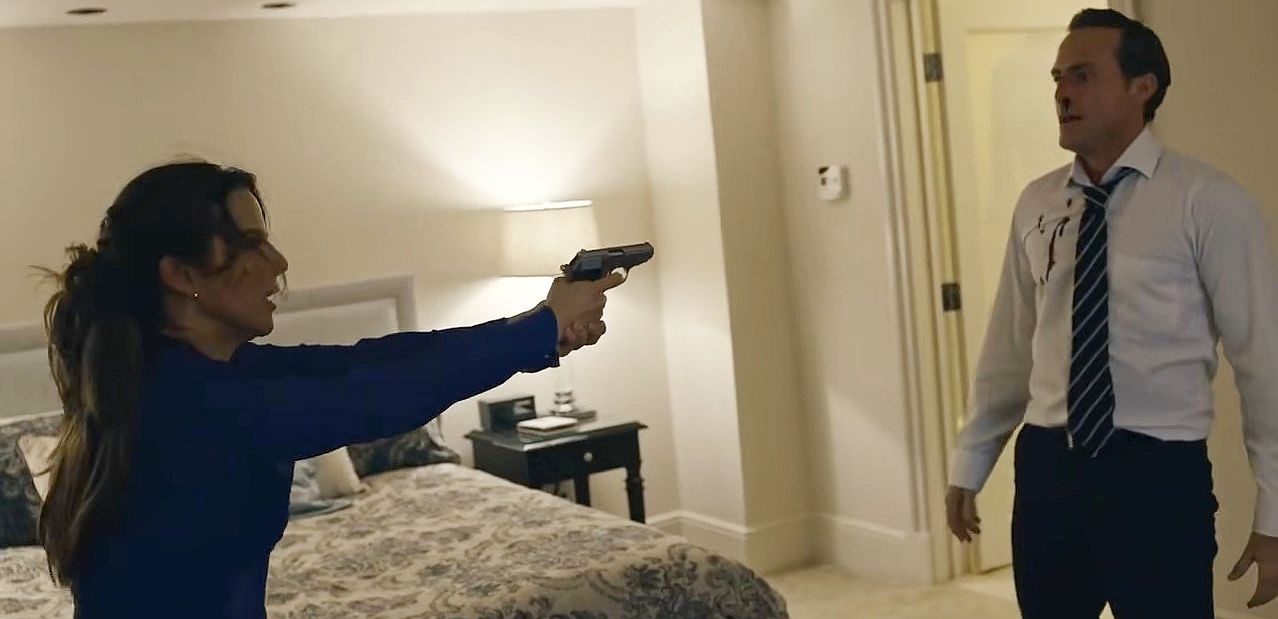 ★★★
★★★ After a long absence, Wynonna Earp (Scrofano) returns to her home town of Purgatory, near the Rockies. There, we discover the truth about the death of her father and disappearance of her sister, events which precipitated Wynonna’s departure. Turns out the great-great-granddaughter of the legendary Wyatt Earp has a supernatural duty to fulfill, using her ancestor’s equally legendary 16-inch barrel “Peacemaker” revolver. Wyatt kept demons known as “revenants” in check, and the mission has been passed down the family line since, with Wynonna the current incumbent. Fortunately, mystical borders keep the revenants within the “Ghost River Triangle,” and she has the help of Deputy Marshal Xavier Dolls (Anderson), an agent in the “Black Badge” division of the US Marshals Service; Doc Holliday (Rozon), the now-immortal former friend of Wyatt; and Wynonna’s kid sister, Waverly (Provost-Chalkley).
After a long absence, Wynonna Earp (Scrofano) returns to her home town of Purgatory, near the Rockies. There, we discover the truth about the death of her father and disappearance of her sister, events which precipitated Wynonna’s departure. Turns out the great-great-granddaughter of the legendary Wyatt Earp has a supernatural duty to fulfill, using her ancestor’s equally legendary 16-inch barrel “Peacemaker” revolver. Wyatt kept demons known as “revenants” in check, and the mission has been passed down the family line since, with Wynonna the current incumbent. Fortunately, mystical borders keep the revenants within the “Ghost River Triangle,” and she has the help of Deputy Marshal Xavier Dolls (Anderson), an agent in the “Black Badge” division of the US Marshals Service; Doc Holliday (Rozon), the now-immortal former friend of Wyatt; and Wynonna’s kid sister, Waverly (Provost-Chalkley).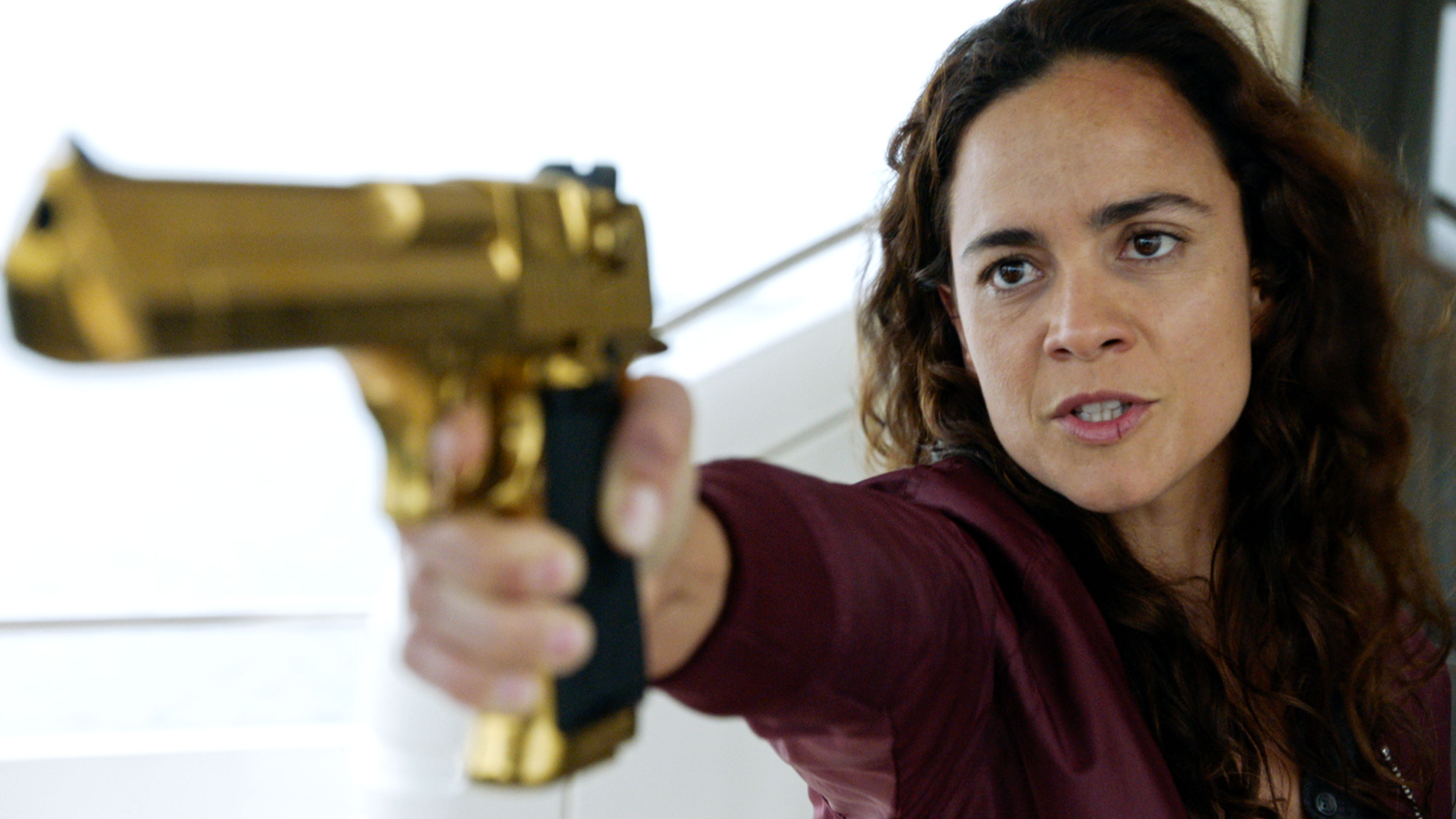 ★★★½
★★★½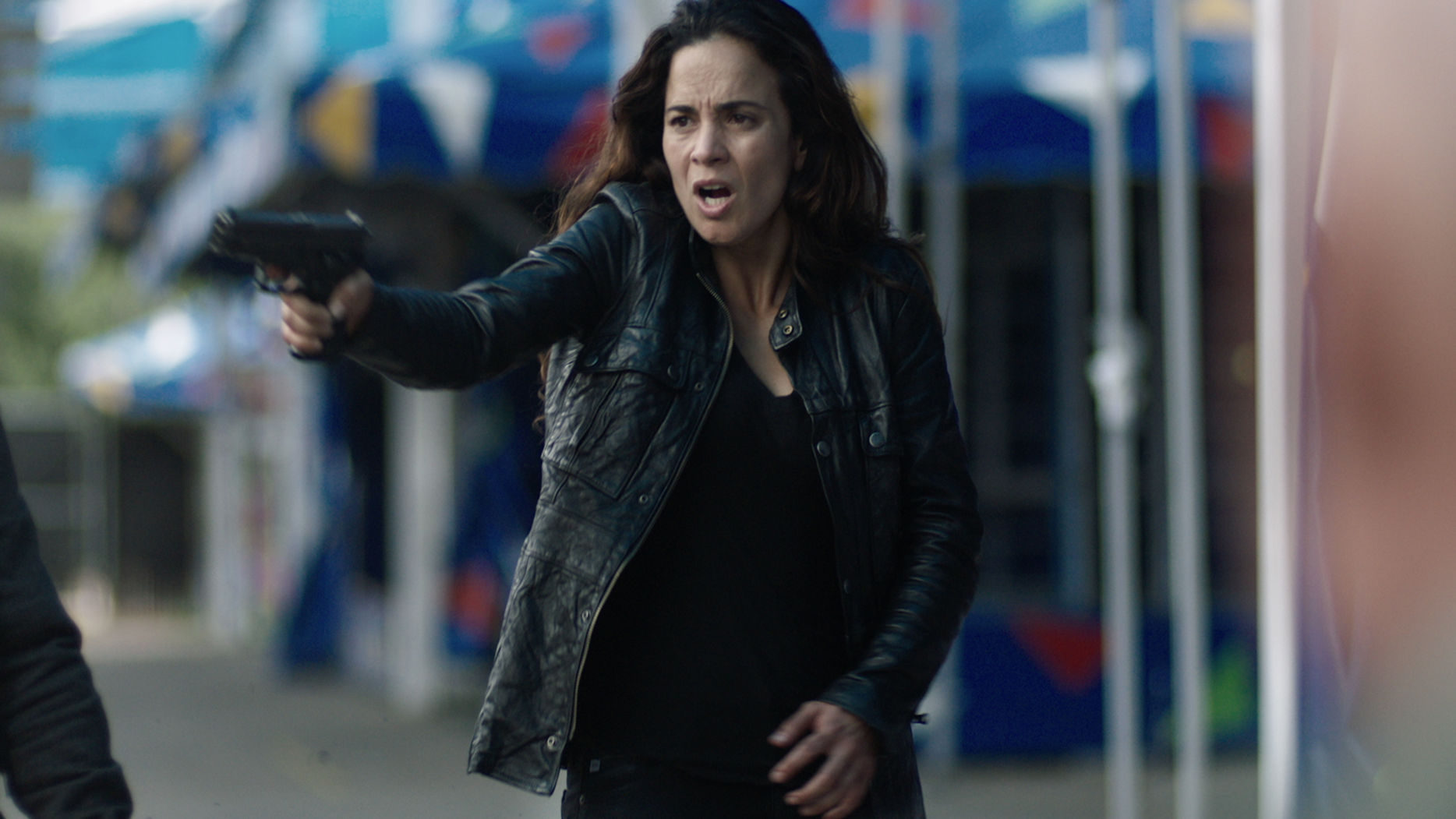
 ★★★★
★★★★ I have only vague memories of the Gorgeous Ladies of Wrestling, which never quite made the same cultural impact on the far side of the Atlantic as in their native country. I seem to recall seeing a couple of episodes, deciding it was a bit crap, and then slapping in a Megumi Kudo barbed-wire death match tape instead. But my interest was rekindled by the wonderful documentary,
I have only vague memories of the Gorgeous Ladies of Wrestling, which never quite made the same cultural impact on the far side of the Atlantic as in their native country. I seem to recall seeing a couple of episodes, deciding it was a bit crap, and then slapping in a Megumi Kudo barbed-wire death match tape instead. But my interest was rekindled by the wonderful documentary,  This is a great deal of fun, striking a very impressive balance between the drama, comedy and – to my surprise – the wrestling elements. For the show does a particularly good job of explaining both the appeal of the sports entertainment in question, and the work that goes in to making it look good. Here, it probably helps that real wrestlers were involved: Chavo Guerrero was the main consultant, and his uncle, Mando Guerrero, helped train the original GLOW ladies in the eighties. Fans will also spot John Morrison/Johnny Mundo, Brodus Clay, Carlito and Joey Ryan in various roles. It’s not at all a parody of the sport; to a significant degree, the original GLOW felt like that. But it also does extremely well at linking the wrestlers and the characters they play, and showing how the latter evolve and develop out of the former.
This is a great deal of fun, striking a very impressive balance between the drama, comedy and – to my surprise – the wrestling elements. For the show does a particularly good job of explaining both the appeal of the sports entertainment in question, and the work that goes in to making it look good. Here, it probably helps that real wrestlers were involved: Chavo Guerrero was the main consultant, and his uncle, Mando Guerrero, helped train the original GLOW ladies in the eighties. Fans will also spot John Morrison/Johnny Mundo, Brodus Clay, Carlito and Joey Ryan in various roles. It’s not at all a parody of the sport; to a significant degree, the original GLOW felt like that. But it also does extremely well at linking the wrestlers and the characters they play, and showing how the latter evolve and develop out of the former. ★★★
★★★ Originally pitched as a vehicle for Gillian Anderson – creator Spotnitz was a head writer on The X-Files – the main problem here is likely a structure which demands a second season the show never received. This seems to have come as a surprise to the creators, since they had put together a writing team and planned out storylines. Then, the show was abruptly not renewed, in response to sagging British ratings (the series lost 30% of its viewers over the eight-week run). Even after the BBC pulled the plug, there were hopes Cinemax would continue the show, as it had sustained its audience much better in the US. Those failed to come to fruition either, and the story of Sam Hunter is left frustratingly incomplete.
Originally pitched as a vehicle for Gillian Anderson – creator Spotnitz was a head writer on The X-Files – the main problem here is likely a structure which demands a second season the show never received. This seems to have come as a surprise to the creators, since they had put together a writing team and planned out storylines. Then, the show was abruptly not renewed, in response to sagging British ratings (the series lost 30% of its viewers over the eight-week run). Even after the BBC pulled the plug, there were hopes Cinemax would continue the show, as it had sustained its audience much better in the US. Those failed to come to fruition either, and the story of Sam Hunter is left frustratingly incomplete. ★★★
★★★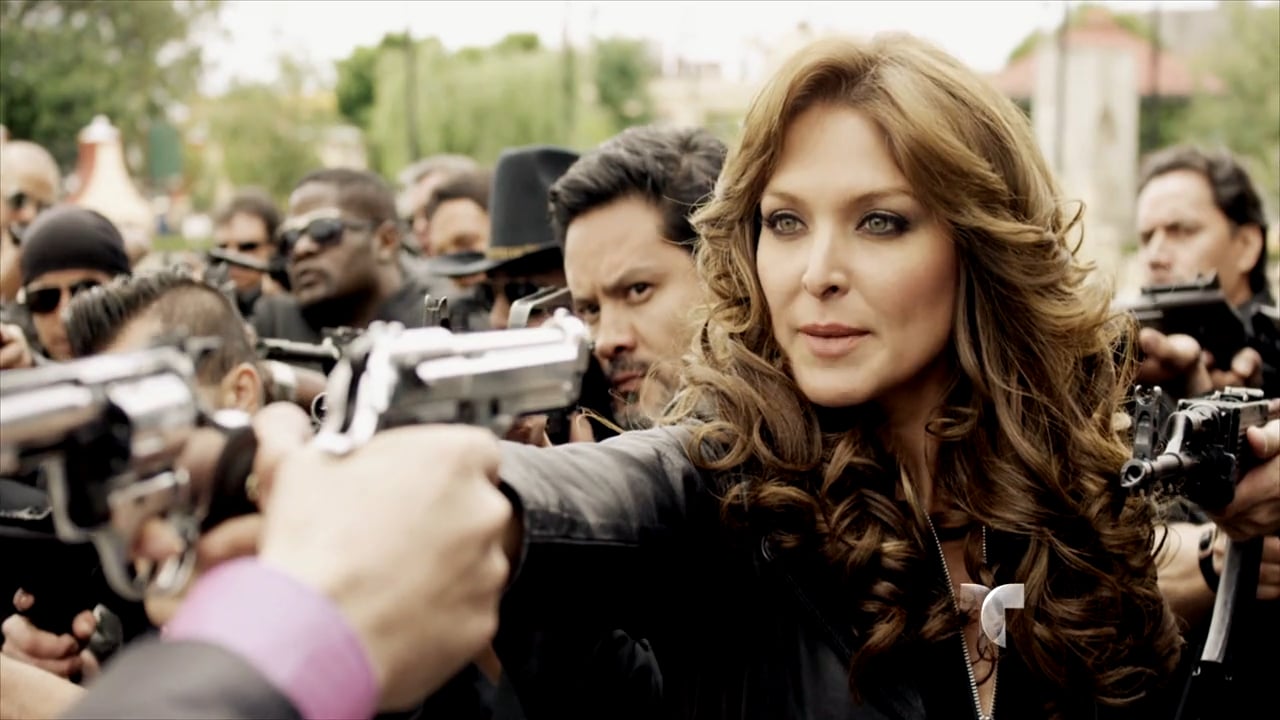 But it is actually fairly rough on occasions: for instance, the removal of Indio’s fingers is well-staged, and revisited frequently [this show
But it is actually fairly rough on occasions: for instance, the removal of Indio’s fingers is well-staged, and revisited frequently [this show  The music in the show is interesting… Norteña band Los Tucanes de Tijuana produced and performed
The music in the show is interesting… Norteña band Los Tucanes de Tijuana produced and performed  Amy (Theobold) is insane. Or so the rest of society thinks, due to her being able to see things nobody else can. She’s trying to keep her head down, working quietly at a bowling alley. But after being attacked, she is rescued by Raquel (Wokoma), another young woman who can see exactly the same things. Amy learns from her new friend that demons are real, and live among us: Raquel has appointed herself a demon-hunter, and convinces the reluctant Amy to join her. This causes no end of issues, not the least of which is Amy’s room-mate becoming one of the possessed, and the most of which is likely the apocalyptic plan of Callum (Curran). He intends to use Raquel to open the gates of hell on Halloween, allowing thousands more demons to flood into our world and take over humans.
Amy (Theobold) is insane. Or so the rest of society thinks, due to her being able to see things nobody else can. She’s trying to keep her head down, working quietly at a bowling alley. But after being attacked, she is rescued by Raquel (Wokoma), another young woman who can see exactly the same things. Amy learns from her new friend that demons are real, and live among us: Raquel has appointed herself a demon-hunter, and convinces the reluctant Amy to join her. This causes no end of issues, not the least of which is Amy’s room-mate becoming one of the possessed, and the most of which is likely the apocalyptic plan of Callum (Curran). He intends to use Raquel to open the gates of hell on Halloween, allowing thousands more demons to flood into our world and take over humans.